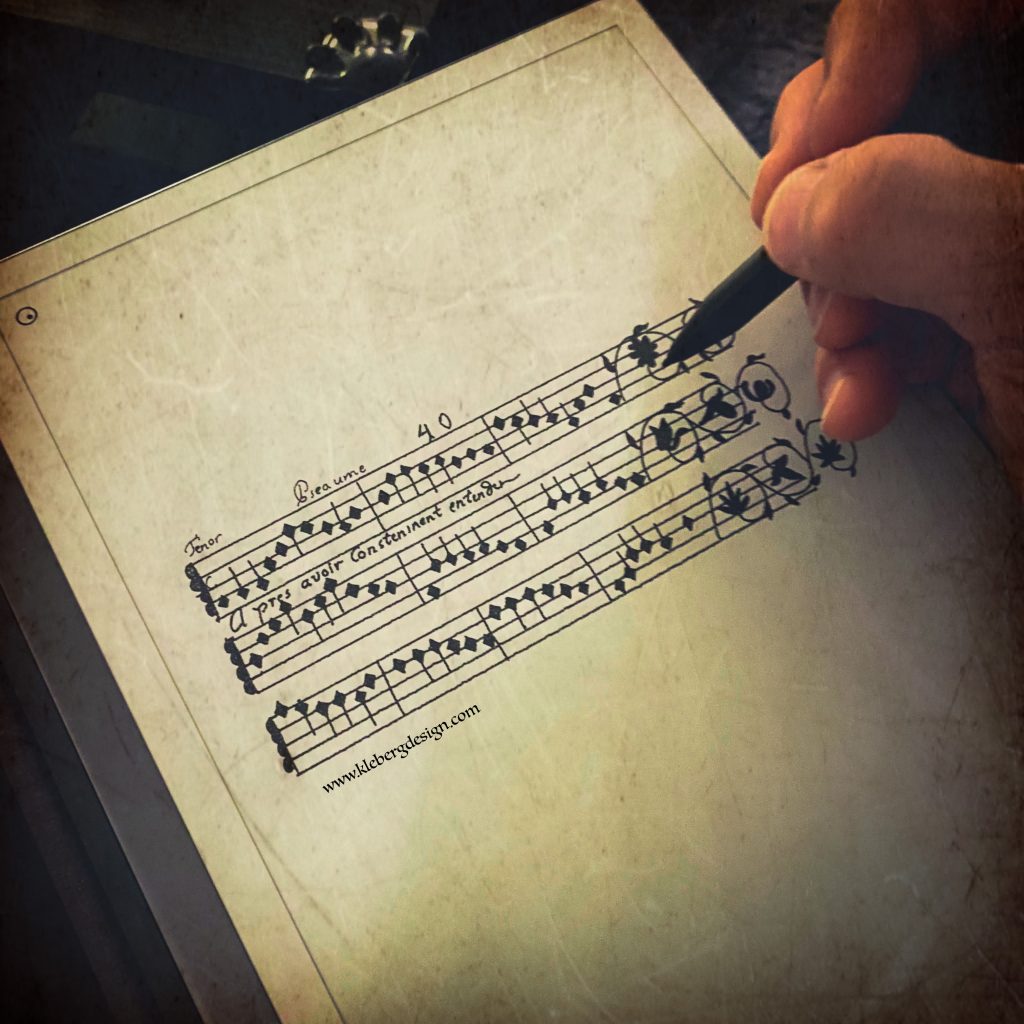
Psaume 60
While I studied the old mensural notation for this song I did not find any lyrics connected to it. But I still loved the visual notation and wanted to make both a design and recording of the song, so I sung it like a Gregorian chant even though it derives form mensural notation. I still hope that you like it though.
The Design:
I have studied the historic parchments and notations to make suitable designs, that I then hand etch or engrave on to my antique materials. Every item in my online shop, I have designed and engraved or etched by hand, which makes them unique and one of a kind items. I wanted to create something meaningful and beautiful but I also wanted to include the mindset of sustainability in to it. Therefor the materials are old antique items redesigned for a bigger and musical purpose of connection and friendship.

The items patina therefor gives the history and culture context more veritas, and also reminds us of the people who came before us. I also arrange, record and make music videos of all my designs. In the slideshow down below, you can see the design for Psaume 60 – mensural notation:
The History:
Mensural notation is the musical notation system used for European vocal polyphonic music from the later part of the 13th century until about 1600. The term “mensural” refers to the ability of this system to describe precisely measured rhythmic durations in terms of numerical proportions between note values. Its modern name is inspired by the terminology of medieval theorists, who used terms like musica mensurata (“measured music”) or cantus mensurabilis (“measurable song”) to refer to the rhythmically defined polyphonic music of their age, as opposed to musica plana or musica choralis, i.e., Gregorian plainchant. Mensural notation was employed principally for compositions in the tradition of vocal polyphony, whereas plainchant retained its own, older system of neume notation throughout the period. Besides these, some purely instrumental music could be written in various forms of instrument-specific tablature notation.






